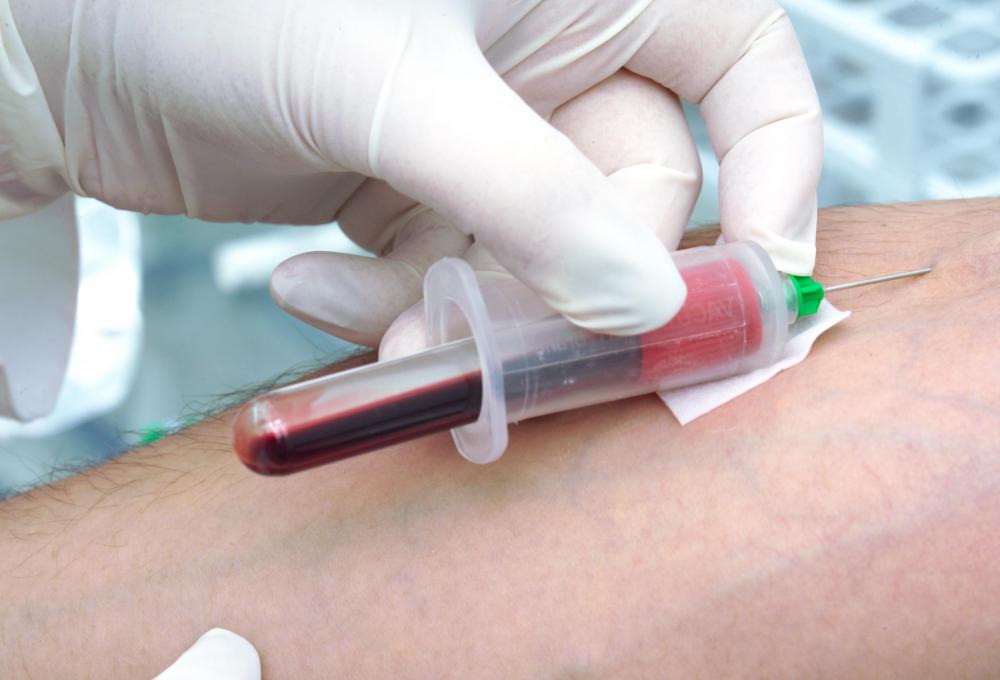At WiseGEEK, we're committed to delivering accurate, trustworthy information. Our expert-authored content is rigorously fact-checked and sourced from credible authorities. Discover how we uphold the highest standards in providing you with reliable knowledge.
What is a Myeloproliferative Disorder?
A myeloproliferative disorder (MPD) is the collective term used for a group of medical conditions characterized by the abnormal production of bone marrow cells. The bone marrow, found inside the soft tissues of larger bones, is mostly responsible for producing the white blood cells (WBCs), platelets and red blood cells (RBCs). RBCs are cells that deliver oxygen to other tissues inside the body. WBCs are cells fight infection, and platelets help in blood clotting.
Cause for the overproduction of these blood cells is unknown but environmental factors such as prolonged exposure to radiation or chemicals, and chromosomal abnormality are said to play a part in the development of myeloproliferative disorder. This disorder commonly affects men more than women between the ages of 40 to 60 years. Its occurrence is not common in individuals younger than 20 years old.

There are several types of myeloproliferative disorder. These include essential thrombocythemia, myelofibrosis, polycythemia vera and chronic myelogenous leukemia (CML). In essential thrombocythemia, there is an increased production of platelets. Myelofibrosis affects the production and maturity of RBC and WBC due to the thickening of fibers in the bone marrow. Polycythemia vera is the overproduction of RBC, and CML is characterized by increased production of WBC.

Symptoms generally depend on the type of myeloproliferative disorder the patient has. For example, patients with polycythemia vera usually develop purple blotchy spots on the skin accompanied by itching. There are, however, several symptoms commonly presented by patients with myeloproliferative disorders. These include becoming tired easily, abdominal discomfort, paleness, easy bruising, and weight loss, among many others.

Complications associated with myeloproliferative disorder are splenomegaly or enlargement of the spleen, hepatomegaly or liver enlargement, and severe anemia, a condition with very low RBC in the circulation. Some patients may also develop kidney failure as well as bleeding tendencies. Other cases may transform into acute myeloid leukemia, a malignant disease of the bone marrow, often resulting in the presence of very young blood cells in the circulation.

Patients with myeloproliferative disorders are usually managed by an oncologist and a hematologist. An oncologist is a cancer specialist and a hematologist is a blood specialist. They usually use diagnostic tests such as blood testing and bone marrow examinations to confirm their diagnosis.
Treatment for myeloproliferative disorder often depends on its type. Splenectomy, or removal of the spleen, is occasionally indicated in patients with chronic idiopathic myelofibrosis. Phlebotomy, the process of withdrawing blood, is frequently done in patients with polycythemia vera. Stem cell transplantation is also an option for patients with chronic myelogenous leukemia and myelofibrosis. Myeloproliferative disorder patients are also advised to maintain hydration, avoid alcohol and smoking, and to include antioxidant-rich foods in their diet.
AS FEATURED ON:
AS FEATURED ON:














Discuss this Article
Post your comments